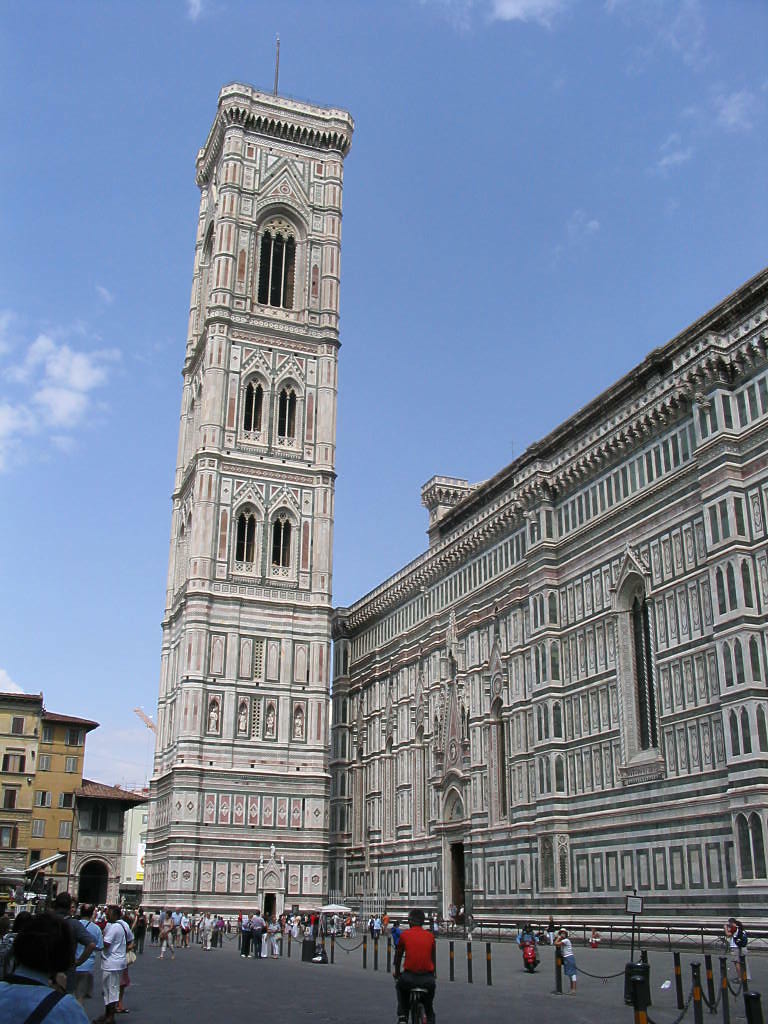The Fairy of Florence Campanile December 29, 2012
Author: Beach Combing | in : Medieval, Modern , trackbackFairies are in short supply in Italy. But recently, working through some folklore books relating to Florence, we were surprised to find a series of urban ‘good folk’ in the city. Bellosguardo had, it seems, a fairy. Via del Corno also. As did the Bargello – it was red, for blood? – and the tower of S. Trinità. The most striking story though relates to the folletto or fairy of the campanile, the bell tower of Giotto. For anyone who has a taste for urban fairies here it is: though be warned it appears in Leland.
Giotto was a shepherd, and every day when he went forth to pasture his herd there was one little lamb who always kept near him, and appeared to be longing to talk to him like a Christian. Now this lamb always laid down on a certain stone which was fast in the ground (masso); and Giotto, who loved the lamb, to please it, lay down also on the same stone. After a short time the lamb died, and when dying said:
Giotto, be not astonished
That I thus speak to thee;
I have such love for thee,
Wherever thou shall go
I will follow thee always
In the form of a fairy,
And through my favour
Thou shall become a great sculptor
And artist.
And so it came to pass that Giotto was an able sculptor by the aid of the lamb, and all that he did was due to the lamb which helped him. And when he died, the spirit of the lamb remained in the form of a folletto or fairy in the campanile, and it is still often seen there, always with the spirit of Giotto. Even in death their souls could not be separate. When any one desires to ascend the tower, and his or her heart fails in mounting the steps, the fairy below says:
‘Go on, go on, Signora,
Go up the stairs oh go!
Be not afraid, my lady!
For I am here below.’
Then the visitor hearing this believes it is one of the guides employed or one of the gentlemen or ladies who are ascending after. And often when half-way up there comes a great puff of wind which blows up their skirts which causes great laughter, and they think that this is only a common thing, and do not perceive that it does not happen to others. And it is said that this fairy appears by night in the Piazza del Duomo, or Cathedral Square, in different forms.
Other Italian fairies? drbeachcombing AT yahoo DOT com



